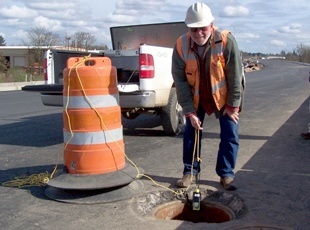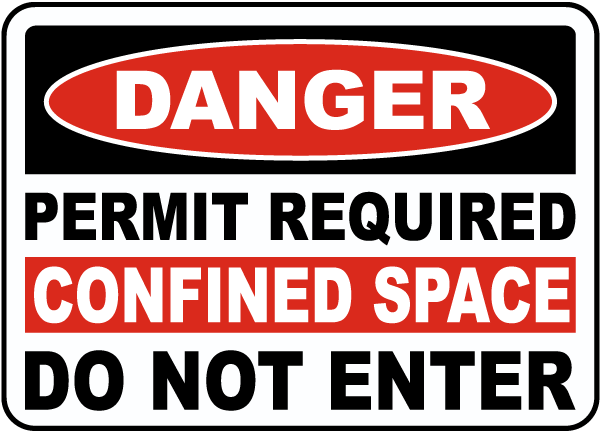Necessary ruling for an often-necessary task in construction. The latest ruling by the Occupational Safety and Health Administration finally catches the construction industry up to counterparts in manufacturing and general industry by offering protections that will save the lives of construction workers each year.
A necessary part of many construction projects, entry of confined spaces—manholes, crawl spaces, pits, tanks, and anything not suitable for continuous occupancy—puts workers at risk due to the sheer difficulty of exiting. People working in confined spaces are often subject to risks including asphyxiation, electrocution, explosion, and exposure to toxic substances.
Here at Optimum Safety Management, we look to help you operate more safely, and would like to offer a few frequently asked questions regarding the new standard, set to take effect on August 3, 2015. For more information, be sure to check out our new confined space resource library.
Definition of a Confined Space
A confined space is any location that has limited means of entry and exit, is large enough for a worker to enter, but is not intended for regular or continuous occupancy.
Confined spaces include, but are not limited to, tanks, vessels, silos, storage bins, hoppers, vaults, pits, manholes, tunnels, equipment housings, ductwork, pipelines, etc.
A key change to the standard was a subpart added to 29 CFR 1926, which replaces OSHA’s one training requirement for confined space work with a “comprehensive standard that includes a permit program designed to protect employees from exposure to many hazards associated with work in confined spaces, including atmospheric and physical hazards.”
Why Was this Necessary?
The construction industry’s standards for confined spaces was well behind that of the manufacturing and general industry standards. Detailed confined spaces standards for manufacturing have been around for over 20 years, so this was necessary and construction companies must take heed.
The Secretary of Labor Thomas E. Perez said of the rule that “in the construction industry, entering confined spaces is often necessary, but fatalities like these don’t have to happen.” “This new rule will significantly improve the safety of construction workers who enter confined spaces. In fact, we estimate that it will prevent about 780 serious injuries every year.”
OSHA Administrator, Dr. David Michaels, said “this rule emphasizes training, continuous worksite evaluation and communication requirements to further protect workers’ safety and health.”
Difference between Confined Space and Permit-Required Confined Space
As communication and training are two of the key issues in the standard, one of the critical elements is knowing the definitions and communication information for confined and permit-required confined spaces. A permit-required confined space is a confined space that has one or more of the following characteristics:
- Contains or has potential to contain a hazardous atmosphere
- Contains a material with potential to engulf an entrant
- Has an internal configuration such that an entrant could be trapped or asphyxiated. Examples include inwardly converging walls or a floor which tapers downwardly into a cross-section
- Contains any recognized safety and health hazard
How Does the Construction Standard Differ from General Industry?
There are 5 key differences in the construction rule, and several areas where OSHA has clarified existing requirements. The new standard addresses more directly the needs of the construction industry.
The five new differences include:
- More detailed provisions requiring coordinated activities when there are multiple employers at the worksite (for more detail, see question below). This will ensure hazards are not introduced into a confined space by workers performing tasks outside the space. An example would be a generator running near the entrance of a confined space causing a buildup of carbon monoxide within the space.
- Requiring a competent person to evaluate the work site and identify confined spaces, including permit spaces.
- Requiring continuous atmospheric monitoring whenever possible.
- Requiring continuous monitoring of engulfment hazards. For example, when workers are performing work in a storm sewer, a storm upstream from the workers could cause flash flooding. An electronic sensor or observer posted upstream from the work site could alert workers in the space at the first sign of the hazard, giving the workers time to evacuate the space safely.
- Allowing for the suspension of a permit, instead of cancellation, in the event of changes from the entry conditions list on the permit or an unexpected event requiring evacuation of the space. The space must be returned to the entry conditions listed on the permit before re-entry.
Finally, several terms have been added to the definitions for the construction rule, such as “entry employer” to describe the employer who directs workers to enter a space, and “entry rescue”, added to clarify the differences in the types of rescue employers can use.
Defining Responsibilities of Host Employer, Controlling Contractor, and Entry Employer
Another important part of the new standard is who’s responsible for what. A great deal of the responsibility falls on controlling contractors, although all factors hold some form of responsibility.
The rule makes the controlling contractor, rather than the host employer, the primary point of contact for information about permit spaces at the work site.
The host employer must provide information it has about permit spaces at the work site to the controlling contractor, who then passes it on to the employers whose employees will enter the spaces (entry employers).
Likewise, entry employers must give the controlling contractor information about their entry program and hazards they encounter in the space, and the controlling contractor passes that information on to other entry employers and back to the host.
As mentioned above, the controlling contractor is also responsible for making sure employers outside a space know not to create hazards in the space, and that entry employers working in a space at the same time do not create hazards for one another’s workers.
OSHA provided a flowchart to demonstrate the flow of information from host employer to coordinating contractor to subcontractors.
What Do Employers Need to Do by August 3, 2015?
With this rule marking such an immense change for those in the construction industry, employers are strongly encouraged to review their safety policies, procedures, and training programs.
OSHA will be cracking down on this rule and without the right processes and policies in place, those unprepared in the construction industry are at risk not only to lose money and contracts, but also the most important asset, the employee.
Optimum Safety Management stands to help your company protect its employees by preparing your organization for this and many other requirements. Learn more about ongoing updates by signing up for our e-newsletter, and contacting us for more information.
Full Text: Confined Spaces in Construction
OSHA Construction Workers’ Confined Spaces Rule by Andrew Simpson










